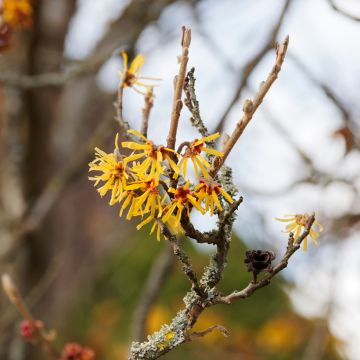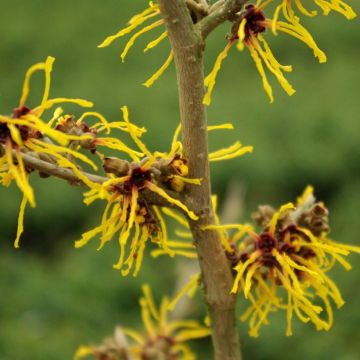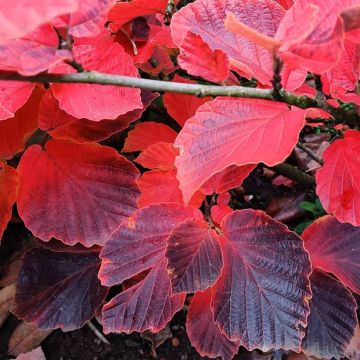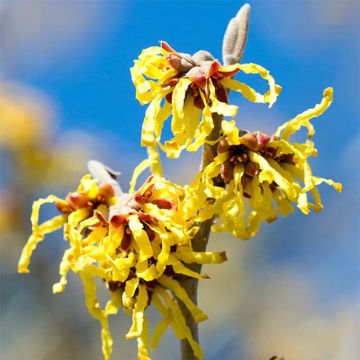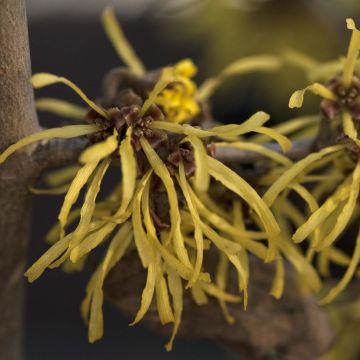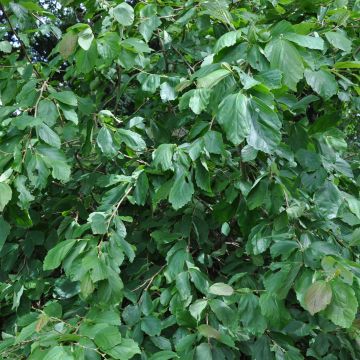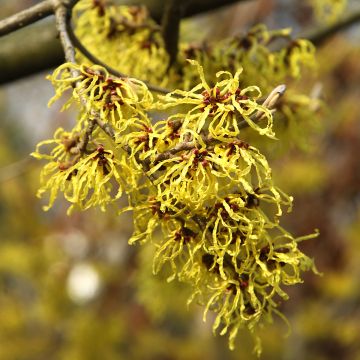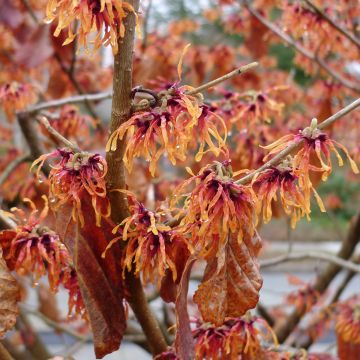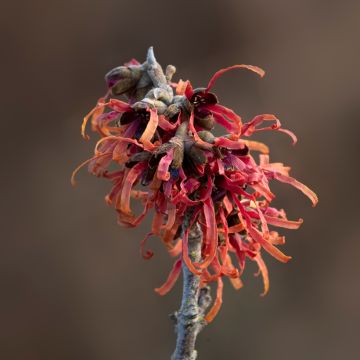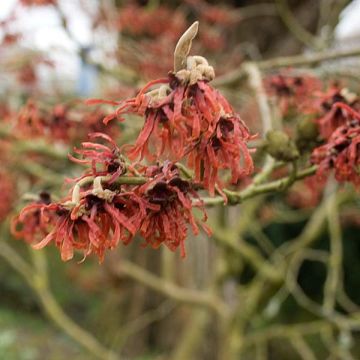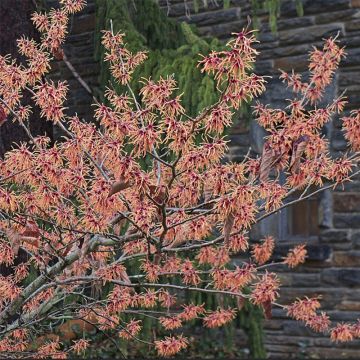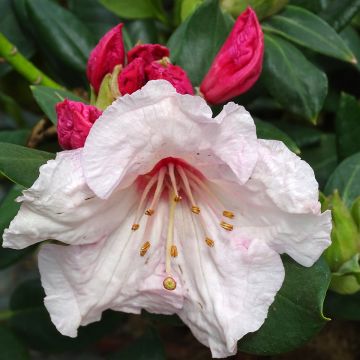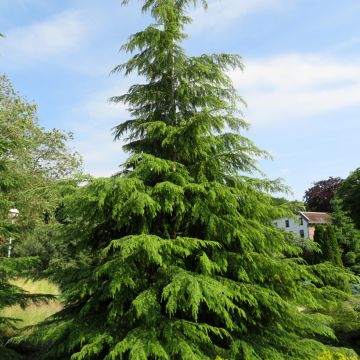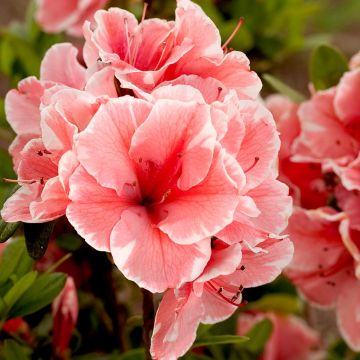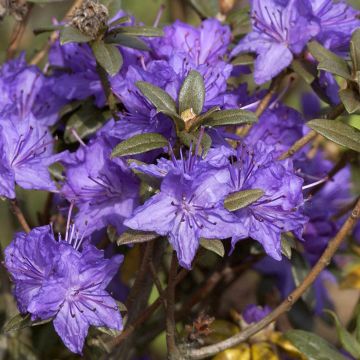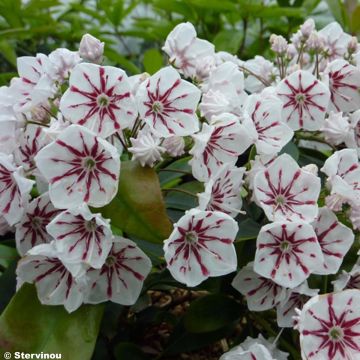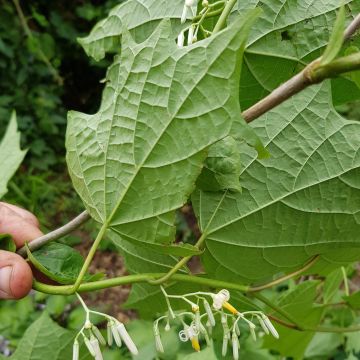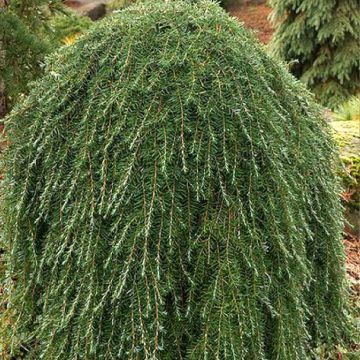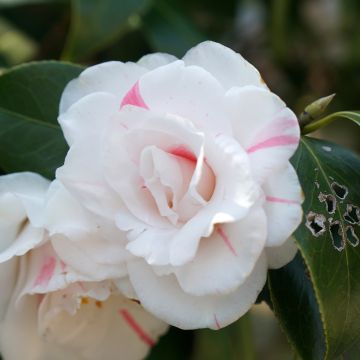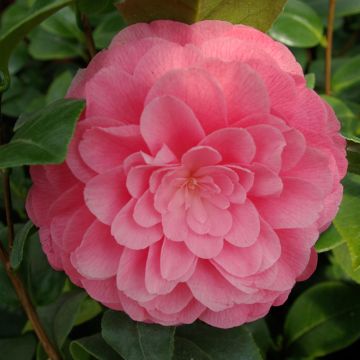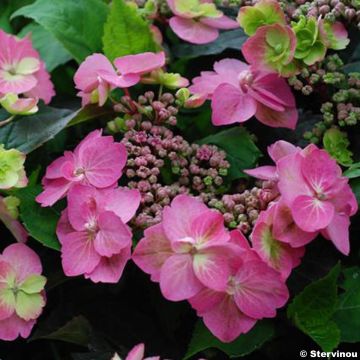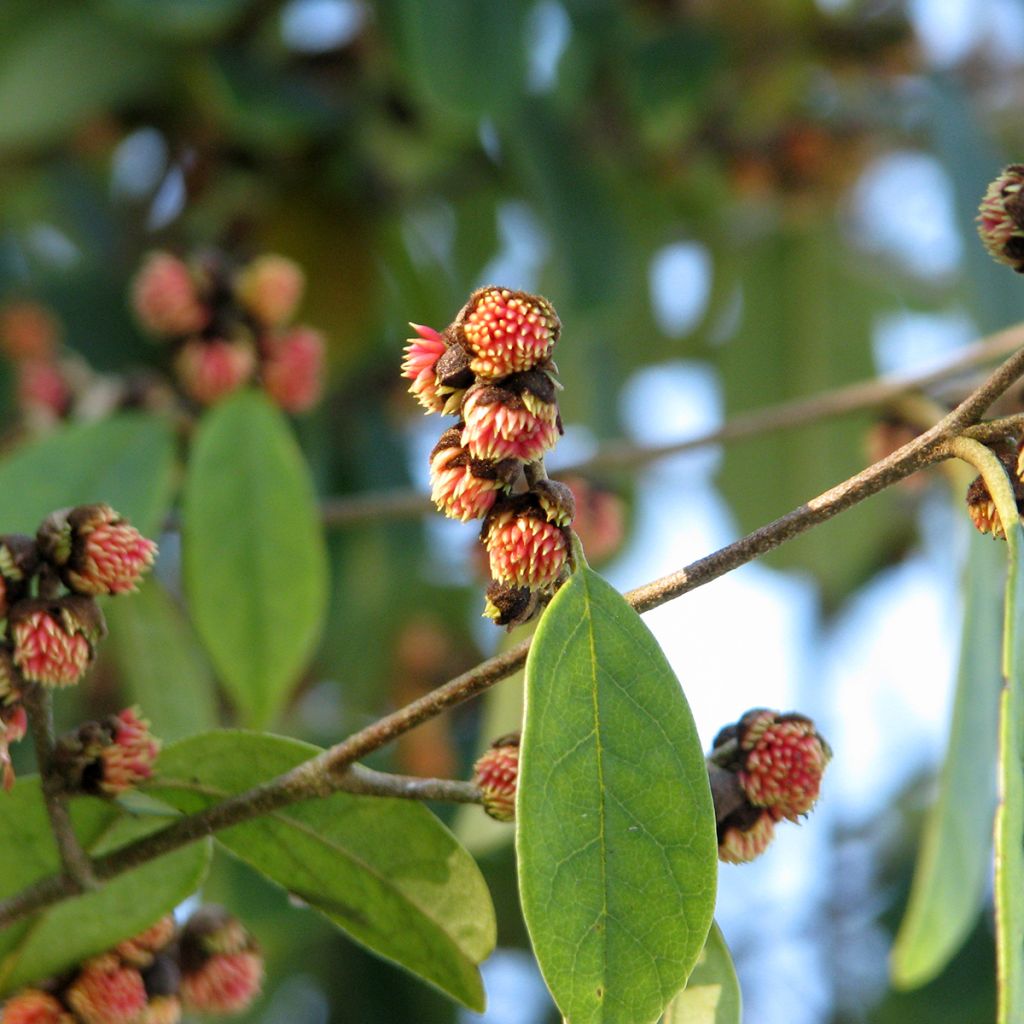

Sycopsis sinensis
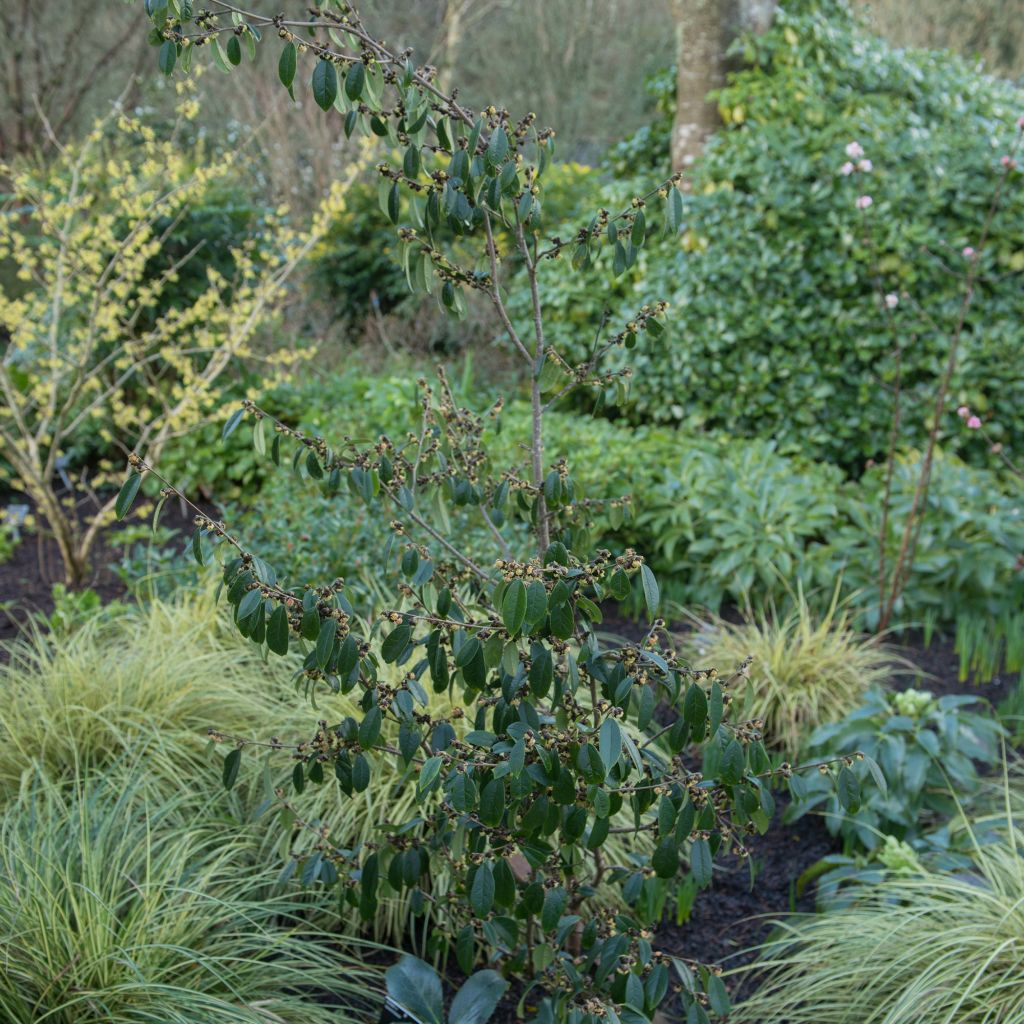

Sycopsis sinensis
Sycopsis sinensis
Sycopsis sinensis
Chinese Fighazel
Why not try an alternative variety in stock?
View all →This plant carries a 24 months recovery warranty
More information
We guarantee the quality of our plants for a full growing cycle, and will replace at our expense any plant that fails to recover under normal climatic and planting conditions.
From €5.90 for pickup delivery and €6.90 for home delivery
Express home delivery from €8.90.
Does this plant fit my garden?
Set up your Plantfit profile →
Description
Sycopsis sinensis or Chinese Sycopsis is a species that is still little known, originating from central and western China, similar to Witch Hazels. It forms a bush with a conical and spreading habit, with upright branches and dark green, leathery, evergreen foliage. In February and March, it is adorned with a superb and unique flowering, typical of its family, with petal-less flowers and prominent, yellow stamens tipped with red. Plant it in acidic to neutral soil to enjoy its unusual flowering and feel the arrival of spring.
Sycopsis sinensis belongs to the Hammamelidaceae family. It is native to central and western China, where it grows in mountainous or semi-mountainous areas, mainly in forests. It is a cousin of the Hamamelis, belonging to the same family and enjoying similar growing conditions. It is a shrub with a beautiful silhouette, with a conical and upright habit, and long upright branches. It reaches a height of 3 to 4 m at maturity and eventually up to 4 to 6 m in height and 3 to 4 m in width. The evergreen leaves are large, 5 to 12 cm long, elliptical to ovate, elongated, finely toothed, leathery, dark green and smooth on the upper side and slightly hairy on the underside. In late winter, it produces dense clusters of short, velvety brown, 2 to 3 cm diameter buds. These buds give rise to petal-less flowers with reddish, velvety sepals, and 10 yellow to reddish-orange anthers, forming small heads surrounded by velvety reddish-brown bracts among the leaves. It is considered frost resistant down to -15 to -18°C.
Sycopsis sinensis prefers moist, humus-bearing or ordinary to poor, acidic soil, but it can tolerate some limestone. The soil should also be light and well-drained. It can be grown in non-scorching sun or partial shade, in a sheltered position. It requires some atmospheric humidity to grow well, but it does not require any specific maintenance apart from pruning to remove damaged or dead branches. Its appeal lies in its very early and unique flowering, as well as its ornamental value. It can be grown as a hedge or in the back of a border. Pair it with Cornus, Camellias, Azaleas, or large Rhododendrons with a carpet of winter heathers mixed with hellebores.
Report an error about the product description
Sycopsis sinensis in pictures


Plant habit
Flowering
Foliage
Botanical data
Sycopsis
sinensis
Hamamelidaceae
Chinese Fighazel
China
Other Hamamelis - Witch-hazel
Planting and care
Plant Sycopsis sinensis in a sunny or partially shaded location, avoiding direct sunlight. It should be grown in acidic soil, or at least in soil that is not highly alkaline, enriched with leaf compost. The soil should remain moist, even in summer. Mulching around the base of the plant will help maintain moisture. Ideally, it prefers humus-bearing soil, but it can tolerate poor soil. The soil should be well-drained and lightweight. Lastly, it should be protected from strong winds.
Planting period
Intended location
Care
This item has not been reviewed yet - be the first to leave a review about it.
Shrubs for semi-shade
Haven't found what you were looking for?
Hardiness is the lowest winter temperature a plant can endure without suffering serious damage or even dying. However, hardiness is affected by location (a sheltered area, such as a patio), protection (winter cover) and soil type (hardiness is improved by well-drained soil).

Photo Sharing Terms & Conditions
In order to encourage gardeners to interact and share their experiences, Promesse de fleurs offers various media enabling content to be uploaded onto its Site - in particular via the ‘Photo sharing’ module.
The User agrees to refrain from:
- Posting any content that is illegal, prejudicial, insulting, racist, inciteful to hatred, revisionist, contrary to public decency, that infringes on privacy or on the privacy rights of third parties, in particular the publicity rights of persons and goods, intellectual property rights, or the right to privacy.
- Submitting content on behalf of a third party;
- Impersonate the identity of a third party and/or publish any personal information about a third party;
In general, the User undertakes to refrain from any unethical behaviour.
All Content (in particular text, comments, files, images, photos, videos, creative works, etc.), which may be subject to property or intellectual property rights, image or other private rights, shall remain the property of the User, subject to the limited rights granted by the terms of the licence granted by Promesse de fleurs as stated below. Users are at liberty to publish or not to publish such Content on the Site, notably via the ‘Photo Sharing’ facility, and accept that this Content shall be made public and freely accessible, notably on the Internet.
Users further acknowledge, undertake to have ,and guarantee that they hold all necessary rights and permissions to publish such material on the Site, in particular with regard to the legislation in force pertaining to any privacy, property, intellectual property, image, or contractual rights, or rights of any other nature. By publishing such Content on the Site, Users acknowledge accepting full liability as publishers of the Content within the meaning of the law, and grant Promesse de fleurs, free of charge, an inclusive, worldwide licence for the said Content for the entire duration of its publication, including all reproduction, representation, up/downloading, displaying, performing, transmission, and storage rights.
Users also grant permission for their name to be linked to the Content and accept that this link may not always be made available.
By engaging in posting material, Users consent to their Content becoming automatically accessible on the Internet, in particular on other sites and/or blogs and/or web pages of the Promesse de fleurs site, including in particular social pages and the Promesse de fleurs catalogue.
Users may secure the removal of entrusted content free of charge by issuing a simple request via our contact form.
The flowering period indicated on our website applies to countries and regions located in USDA zone 8 (France, the United Kingdom, Ireland, the Netherlands, etc.)
It will vary according to where you live:
- In zones 9 to 10 (Italy, Spain, Greece, etc.), flowering will occur about 2 to 4 weeks earlier.
- In zones 6 to 7 (Germany, Poland, Slovenia, and lower mountainous regions), flowering will be delayed by 2 to 3 weeks.
- In zone 5 (Central Europe, Scandinavia), blooming will be delayed by 3 to 5 weeks.
In temperate climates, pruning of spring-flowering shrubs (forsythia, spireas, etc.) should be done just after flowering.
Pruning of summer-flowering shrubs (Indian Lilac, Perovskia, etc.) can be done in winter or spring.
In cold regions as well as with frost-sensitive plants, avoid pruning too early when severe frosts may still occur.
The planting period indicated on our website applies to countries and regions located in USDA zone 8 (France, United Kingdom, Ireland, Netherlands).
It will vary according to where you live:
- In Mediterranean zones (Marseille, Madrid, Milan, etc.), autumn and winter are the best planting periods.
- In continental zones (Strasbourg, Munich, Vienna, etc.), delay planting by 2 to 3 weeks in spring and bring it forward by 2 to 4 weeks in autumn.
- In mountainous regions (the Alps, Pyrenees, Carpathians, etc.), it is best to plant in late spring (May-June) or late summer (August-September).
The harvesting period indicated on our website applies to countries and regions in USDA zone 8 (France, England, Ireland, the Netherlands).
In colder areas (Scandinavia, Poland, Austria...) fruit and vegetable harvests are likely to be delayed by 3-4 weeks.
In warmer areas (Italy, Spain, Greece, etc.), harvesting will probably take place earlier, depending on weather conditions.
The sowing periods indicated on our website apply to countries and regions within USDA Zone 8 (France, UK, Ireland, Netherlands).
In colder areas (Scandinavia, Poland, Austria...), delay any outdoor sowing by 3-4 weeks, or sow under glass.
In warmer climes (Italy, Spain, Greece, etc.), bring outdoor sowing forward by a few weeks.

































